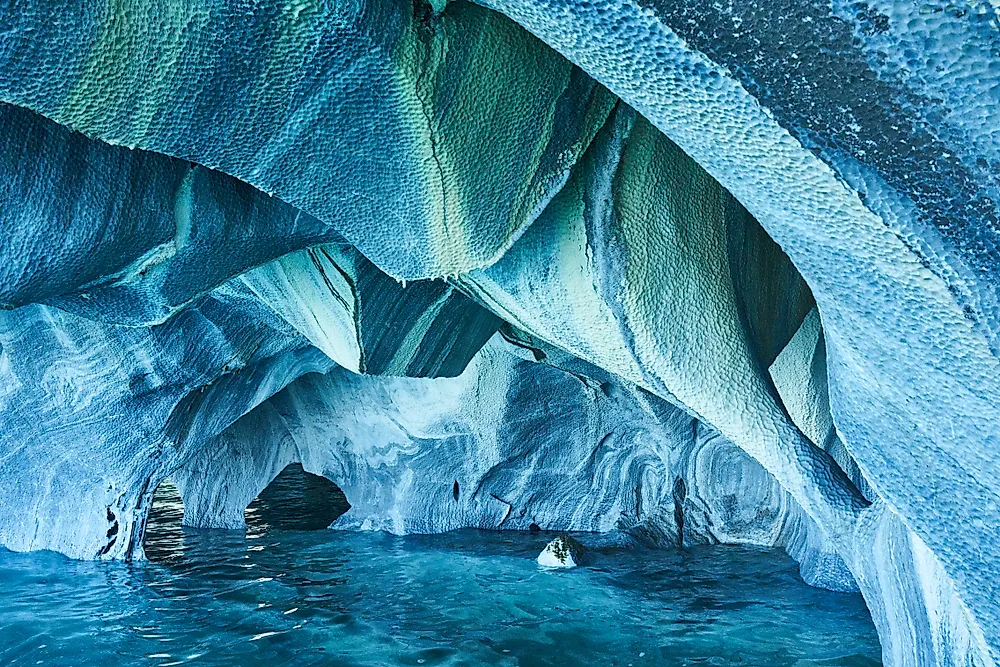What Are The Different Zones Of A Cave?

A cave is a natural void in the ground that is usually formed through the weathering of rocks. The hollow space that forms a cave can contain parts called corridors, which are narrow passageways, as well as chambers. Caves exist all over the world, and people who study caves are referred to as speleologists, while organisms that live in a cave are known as troglobionts. Some caves have become popular tourist destinations for individuals seeking adventure and scenic beauty. Terrestrial caves are composed of three sections, namely the entrance or light zone, twilight zone, and dark zone.
Different Zones of a Cave
A cave has three distinct zones: entrance zone, twilight zone, and dark zone.
Entrance Zone
The entrance zone refers to the entry point of a cave, which usually receives adequate sunlight. This part of the cave opens to the outside environment and experiences varied temperatures, as it adjusts to the external environment and climate. The entrance zone can be either naturally formed or created by humans. Green plants grow in this zone because it contains sunlight, which is needed for photosynthesis. The entrance zone of a cave can be inhabited by various forms of life, including beetles, small rodents, spiders, snakes, salamanders, earthworms, millipedes, owls, and snails. Additionally, certain terrestrial animals, such as raccoons and bears, may take refuge in the entrance zone to sleep, eat, and nest.
Twilight Zone
The twilight zone is the part of a cave that receives a small amount of sunlight since it is not too far from the entrance. This zone is cool and damp, and its temperature is usually constant. The twilight zone is shared by both outside organisms and cave dwellers, resulting in the transfer of energy, in the form of nutrients, from outside the cave to inside. Animals that live in the twilight zone are trogoloxenes, such as spiders, bats, moths, cave crickets, cave beetles, and millipedes.
Dark Zone
The dark zone is the deepest and darkest part of the cave. It is located at the back of the cave and receives no sunlight. As a result, the dark zone is always cool, dark, and its temperature is constant. The dark zone is inhabited by troglobites, such as eyeless shrimp and blind crayfish. Animals in this zone possess certain features like long antennae, are white, pink or colorless, and have poor eyesight. Colorless bodies are the result of a lack of pigmentation. Organisms that live in the dark zone never leave the cave.
Cave Ecosystem
A typical ecosystem includes producers, which mainly consists of vegetation and green plants that depend on sunlight for photosynthesis. Herbivores feed on this vegetation, and carnivores feed on the herbivores. Ultimately, apex predators, detrivores, and decomposers complete the food chain. The cave ecosystem is slightly different since the environment has an overall lack of sunlight, which is usually the main source of energy. As a result, decomposers, such as fungi and bacteria, serve as the producers. These producers are consumed by earthworms, millipedes, mites, springtails, beetles, and gnats. Next, these organisms then become consumed by pseudoscorpions, mice, salamanders, and spiders. Four categories of animals exist in caves, namely accidentals/incidentals, troglobites, troglophiles, and trogloxenes.
Accidentals are organisms that wander, fall, or are washed into a cave. This category include snakes, groundhogs, frogs, and turtles, which cannot survive inside a cave, and will therefore die if they do not eventually exit. If accidentals die inside a cave, they become a rich source of nutrients for the cave ecosystem. Troglobites spend all stages of their life inside the cave and cannot survive outside. They lack eyes and skin pigmentation, and have adapted to life in the dark. Troglobites are one of the rarest species on Earth, and include Texas salamanders, eyeless shrimp, crayfish, cave beetles, cave millipedes, and the Madison cave isopod. Troglophiles live in a cave, but leave the cave to hunt for food. Additionally, part of their life cycle occurs in the outside environment. Examples of troglophiles include mice, bats, woodrats, and raccoons. Trogloxenes can exist in a cave during all parts of their life cycle, but can also survive outside the cave. Examples of trogloxenes are cave salamanders and cave crickets.











